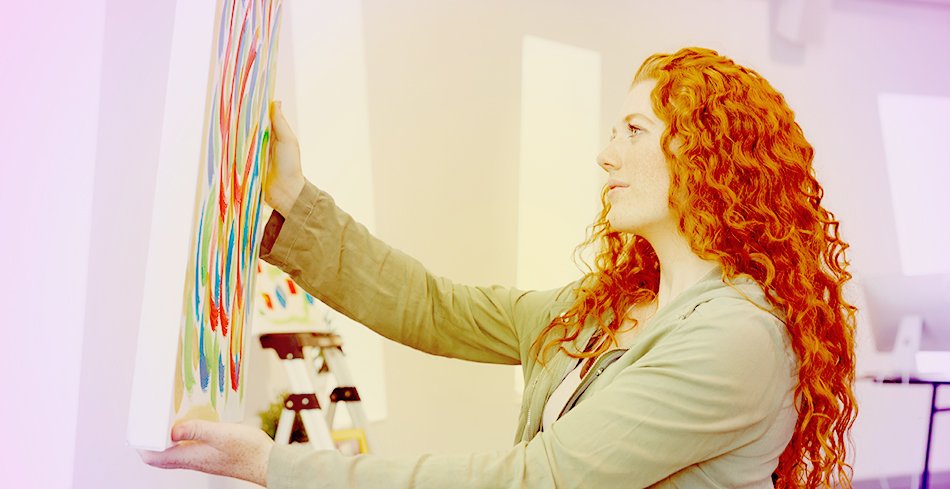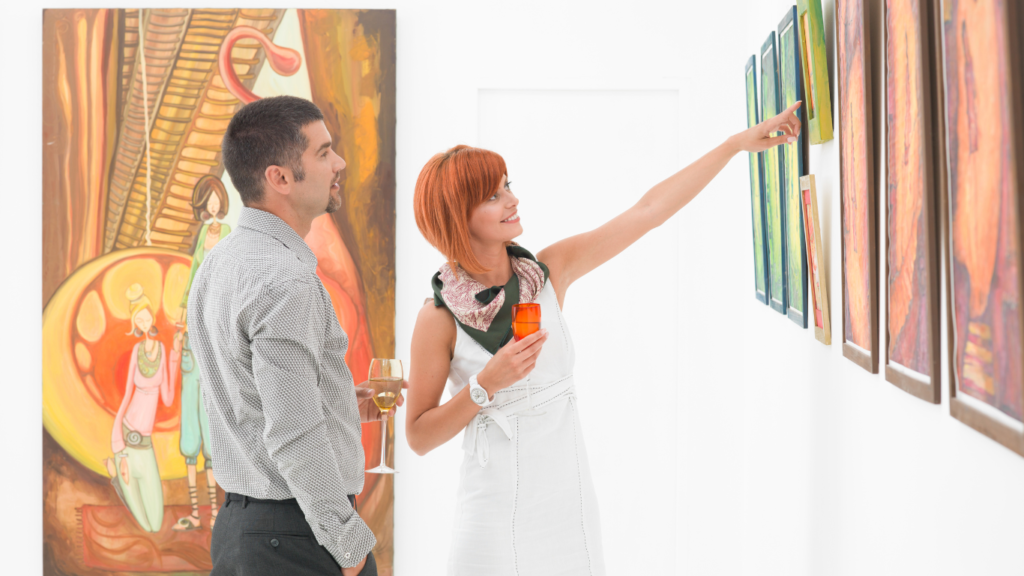Art exhibitions are not only a great opportunity to showcase your work but also an excellent platform to network with other artists, art collectors, curators, and industry professionals. Networking can play a pivotal role in growing your career, finding new opportunities, and building long-lasting relationships in the art world. However, effective networking requires more than just showing up at an event; it involves strategic communication, preparation, and follow-up. In this post, we’ll explore several tips to help you network successfully at art exhibitions and make the most of your presence.
1. Prepare Your Portfolio and Elevator Pitch
Before you even step foot in the exhibition, it’s crucial to have your portfolio ready. A digital or physical portfolio that showcases your best work will make it easy to show off your art when you meet new people. Keep it updated with high-quality images of your paintings, sketches, or any other artwork you wish to highlight. Having your portfolio organized shows that you take your art seriously and are prepared for any opportunity that may arise.
In addition to your portfolio, prepare a brief elevator pitch. This is a quick, compelling introduction that describes who you are as an artist, your style, and your artistic vision. Keep it concise—aim for 30 seconds to one minute. An effective pitch will make you memorable and help others quickly understand your artistic identity. Tailor it to your audience, whether you’re speaking to a fellow artist, a potential buyer, or a gallery owner.
2. Engage with Other Artists
One of the most valuable aspects of art exhibitions is the chance to meet and interact with fellow artists. Networking with your peers can lead to collaborations, creative inspiration, and mutual support. Rather than just focusing on potential buyers or curators, make an effort to engage with other artists who may be in the same stage of their careers as you. Share experiences, talk about creative processes, and discuss upcoming exhibitions or opportunities.
Artists often form strong, supportive networks, and being part of such communities can help you learn and grow. Be open to feedback, and try to build genuine relationships rather than just trying to sell your art. Remember that a friendly, approachable attitude can go a long way in establishing long-term connections in the art world.
3. Connect with Curators and Gallery Owners
Curators and gallery owners play a key role in shaping the art world. They often have the power to give artists exposure and offer exhibition opportunities. When attending an art exhibition, try to engage with curators and gallery owners who may be in attendance. Approach them with confidence, but don’t be too aggressive. It’s essential to show genuine interest in their work and ask thoughtful questions about their galleries or curating process.
If you have a specific gallery or curator in mind, research them beforehand. Learn about the types of art they typically showcase and how your work aligns with their vision. By having this knowledge, you can demonstrate that you’re not just handing out business cards but are genuinely interested in a potential collaboration. Be sure to follow up with them after the exhibition by sending a thank-you email and possibly providing them with a link to your portfolio or website.
4. Attend Networking Events and Panel Discussions
Many art exhibitions host special networking events, panel discussions, or workshops. These events provide a unique opportunity to engage with art professionals in a more structured setting. Panel discussions, for example, often feature curators, art critics, and established artists, offering valuable insights into the current state of the art world. Attending these events can help you gain knowledge, stay updated on industry trends, and meet influential people in a more relaxed, yet professional, environment.
During networking events, don’t be afraid to introduce yourself and ask questions. Approach speakers and panelists after their talks to thank them for their insights and express interest in their work. This shows that you are active and engaged in the art community and can lead to further opportunities down the road.
5. Be Social Media Savvy
Social media is an invaluable tool for artists to promote their work and connect with industry professionals. Make sure your social media profiles—such as Instagram, LinkedIn, and Facebook—are professional and up-to-date with high-quality images of your art. During the exhibition, use social media to share your experience. Post images of your artwork on display, tag other artists and galleries you’re networking with, and engage with content related to the exhibition.
Many art events and exhibitions have hashtags or official social media pages. Use these to your advantage to interact with others attending the event. By engaging online, you can extend your networking efforts beyond the exhibition itself and continue building connections even after the event ends.
6. Bring Business Cards
Even in the digital age, business cards remain an important networking tool. Having a physical card that represents you and your work can make a lasting impression. Make sure your business card is simple but includes essential information, such as your name, website, social media handles, and email address. You may meet someone who is interested in your work but doesn’t have time to look at your portfolio right away. Having a business card ready will allow them to easily follow up with you later.

When exchanging business cards, be polite and take the time to ask about the other person’s work or interests. Networking is about building relationships, and taking a moment to connect on a personal level can go a long way in fostering meaningful interactions.
7. Follow Up After the Exhibition
The final step in effective networking is following up after the exhibition. It’s easy for people to forget about a casual meeting, so reaching out with a brief email or message can help you stay on their radar. In your message, remind the person of your conversation and express your gratitude for their time. If you discussed potential opportunities, reiterate your interest and include links to your portfolio or recent work.
Keep your follow-up messages professional and sincere. Don’t overdo it by sending too many messages; a simple note can make a big impact and show your commitment to building long-term relationships.
8. Stay Confident and Authentic
Lastly, remember that networking is about forming authentic connections. Be confident in your work and approach, but always stay true to yourself. People are more likely to remember you if you’re genuine, passionate, and enthusiastic about your art. Don’t try to be someone you’re not—let your personality shine through, and you’ll build meaningful relationships that can last throughout your artistic career.
Conclusion
Networking at art exhibitions is an essential part of growing as an artist. It’s not just about making connections for immediate opportunities but about building lasting relationships that can support your career in the long term. By preparing your portfolio, engaging with other artists, connecting with curators and gallery owners, and following up afterward, you’ll be well on your way to establishing a solid presence in the art world. So go ahead, take the plunge, and use these tips to network effectively at your next exhibition!

